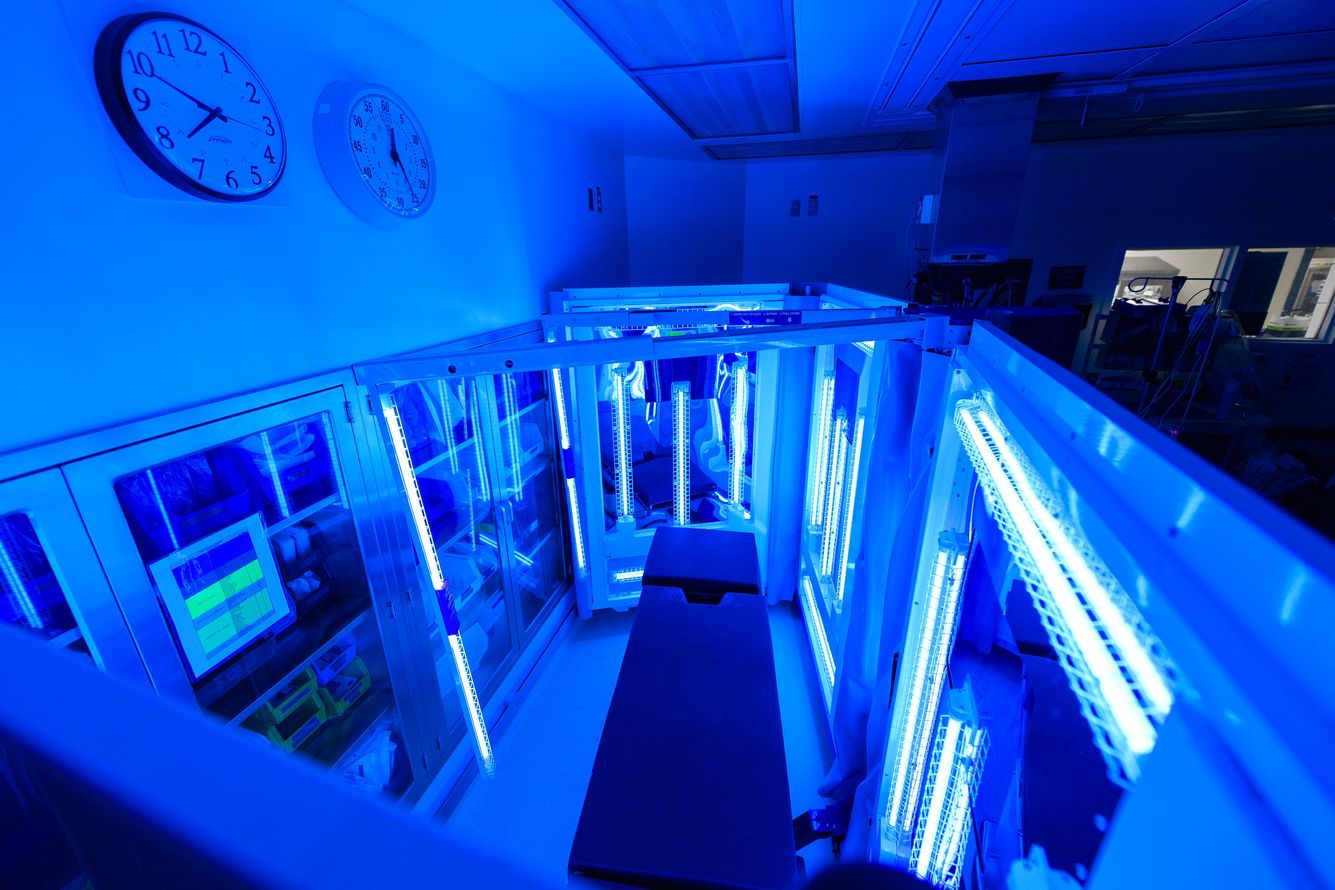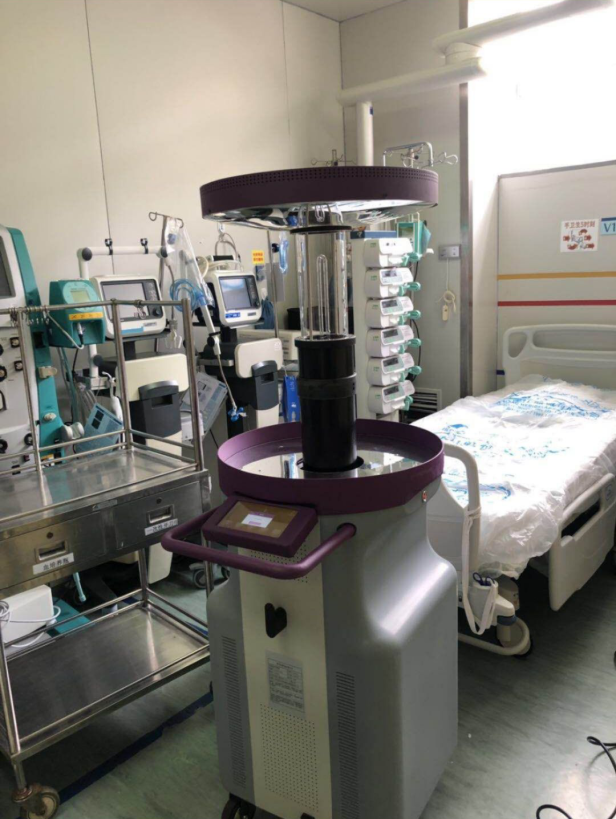The Basics of UV Light Disinfection
2021-02-25 by hqt
UV Light Disinfection: Learning The Basic Concepts
The low wavelength of 290nm makes the UV-C light radiation a contemporary source possessing germicidal properties for killing germs and pathogens. The UV light disinfection system now becomes the most pertinent factor in the decontamination of the areas and your surroundings.
This light technology happens to be both artificial as well as natural. The natural abundance of this phenomenon is huge in number and amount. The UV light, therefore, is a naturally present electromagnetic radiation that is coming to use through direct sunlight. These radiations however make only 10% of the total amount of light that we receive daily from the sunlight. These radiations are invisible to the human eyes.
The reason behind this phenomenon is the shorter wavelength of these radiations. The wavelength of the uv light is smaller or shorter than that of the visible light. However, it is much larger than the X-rays. There are three sub-varieties of wavelengths that we distinguish as UV-A, UV-B, and UV-C. The three wavelengths range from 10nm to 400nm.
Effective UV Light Wavelength Against Disinfection
As we have discussed the number and variety of wavelengths. Therefore, the three-basic wavelengths as A, B, and C are the subcategories bands of energy. The nearest of them all is the UV-A, The UV-B thereby lies in the middle range, and last but not least is the UV-C that lies at the far limit.
This UV light is also famous as Far-UV Light. The UC light that lies at the wavelength of 290nm happens to be the most effective source against the germicidal elements and properties. However, on the other hand, lies the natural UV light energy that reaches the earth's atmosphere.
This light energy proves to be less than the prescribed 290nm wavelength. This makes the UV-A the only energy that reaches the earth's atmosphere. Furthermore, the other two wavelengths as UV-B and UV-C get a blockage by the Ozone Layer.
History of UV Light Invention
Its been 140 years since Downes and Blunt happens to discover the germicidal properties of UV light. After that man starts knowing and researching about the UV light disinfection mechanism and its properties in detail.
The two scientists discover the antibacterial effects of those feasible wavelengths of UV light. After much research and study, now it is a proven axiom that with the help of UV light we can also destroy a large number of microorganisms as well.
However, all this happened to revolve around the natural phenomenon of UV light. But, after that experts started the struggle as their next step to finding ways to replicates the same phenomenon artificially.
This thereby helps humans in disinfecting the places, air, and surfaces they live in and around. The food we eat and the water we drink must be decontaminated. In this wake in 1904, the first quartz uv light disinfectant germicidal lamp was invented. By germicidal lamp, it refers to the lamps that carry the wavelength of 200nm to 280nm. These properties are exactly similar to that of the properties that we study and observe in the N-95 Mask.
UV Light Disinfection Technology
By far we have understood what UV light disinfection technology is and what are the different variations in it as its wavelengths. The UV light technology that carries the UV-C wavelength, as the smallest wavelength, happens to be less than 290nm.
This, therefore, is the most suitable frequency at which it proves germicidal light. This thereby means that it can kill germs. This wavelength by an artificial source helps in decontaminating the pathogens and microbes in air and water and on the surfaces.
Working Principle
The small wavelength of UV light disinfection comes with huge benefits. By nature, the small wavelength carries a large frequency that happens to damage and infects the DNA of the microorganism. This process thereby stops the natural cell growth of the organism ultimately killing them.
This requires an optimum amount of exposure of the organism to the UV light electromagnetic radiations. This eventually affects the reproductive system as well as the ability of the microorganisms themselves.
As we know that the DNA and RNA in the cell are responsible for inciting the reproductive ability of the organisms. Therefore, the light instigates and triggers the creation of a specific type of thymine and cytosine in the DNA and uracil dimers in the RNA cells respectively. This thereby causes the death and mutation of the cell reproduction and inactivation of the microbes.
Eventually, the cells fail to respond to the reproduction process. This failure, however, is not a compulsion in every attempt. Therefore, sometimes the only activation of the cell rather the ultimate death of the organism.
By this means, the CDC (Center for Disease Control) suggests that UV light is feasible for killing the germs, pathogens, and microbes in such a way that it attacks the DNA and RNA of the cellular system. Nevertheless, the killing ratio and effective death rate depend upon the size of the DNA and RNA.
By this, it means that the large DNA molecules require a large span for exposure in comparison to that of the small DNA molecules. Similarly, killing or disrupt the large DNA molecules, requires extensive exposure to UV light radiations. Furthermore, there are no signs and reports of microbes, etc. of building immunity against the UV light radiations.
UVGI: Differences Between Sterilization, Disinfection, And Decontamination
UVGI is another UV light disinfection method. The method uses a short wavelength of UV light which is UV-C for killing or deactivating the germs, pathogens, and microbes. To disinfect the air, surface, and water, the UVGI uses a system of short wavelengths. The effectiveness, again, depends upon the time length of exposure of the microbes against UV light. But there is a great difference between sterilization, disinfection, and decontamination. Let us discuss one by one here:
Sterilization:
According to the definition and guidelines of the Center for Disease Control (CDC), Sterilization is the process of killing, destroying completely, or eliminating, any kind of germs, pathogens, or microbes by the use of chemical or physical methods.
Disinfection:
Disinfection on the other hand calls for the elimination of germs, diseases, and pathogens of some or all on any inanimate surface or object. Here animate objects are do not conform to the process.
Decontamination:
However, the decontamination process allows is neutralization or removal or destroying process of any kind of harmful substance. Decontamination here is not a method at all, here is a state or result after the process of sterilization and disinfection.
Can UV light systems disinfect the air, water, and surface?
Air:
There are several ways to disinfect the air. The most common of them are using UVC lamps. The HVAC or ceiling fixtures as UV lamps are traditional methods. This thereby allows the devices to disinfect the air above continuously. The lamp carries enough amount of UV light. Therefore, it becomes safe for humans as it directs the light towards the upward direction.
Water:
Water is one of the most common substances to purify while letting it gone through the UV light radiations. This practice is very much common in places like municipal administrative vicinities. They use it on the wastewater as well as in water treatment plants.
Surface:
On the surface, the UV light technology kills the germs and pathogens that reside on the surface, any material, or on objects. These microbial organisms are very much common in PPE and other health-related units, facilities, and equipment.
However, it demands an absence of any person or living creature in the room. This is because Duke University’s study proves that UV light can reach even the hardest places and corners in the room. Therefore, it becomes imperative for humans to get out of the room in instant.
For More Information, Contact Us Today!



